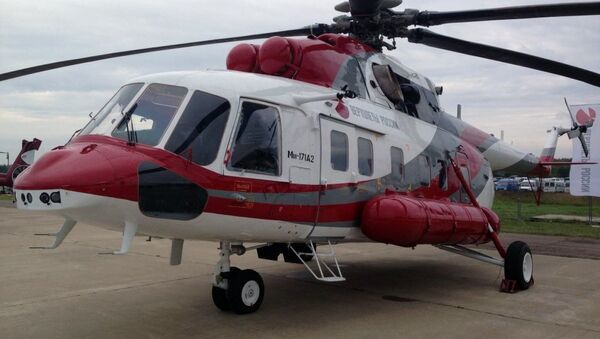While presenting the Mi-171A2 to a large group of Russian and foreign journalists, Dmitry Zuikov, the head of marketing at the Russian Helicopters holding company, said that the Mil-171A2 is powered by newly-designed engines that ensure the rotorcraft’s fail-proof use in high humidity tropical conditions.
“The Mi-171A2 is ideally suited for regions like the Middle East, Southeast Asia and Latin America and boasts the best qualities of the Mi-8/17 series, including the onboard equipment. Because most of its elements are made in Russia, we can freely sell it abroad disregarding any sanctions,” Zuikov added.
The Mi-171A2’s cabin accommodates up to two crew members and 24 passengers in energy-absorbing seats.
The helicopter takes a mere 40 minutes to be converted to a cargo version.
It has a maximum payload of four tons inside the cabin, while the maximum payload on the external sling is 5 tons – a whole ton more than its Mi-8/17 predecessor can boast of.
A great deal of attention has been paid to safety. In a departure from the earlier layout where the main fuel tanks were placed on both sides of the airframe and an additional one on top, in the Mi-171A2 the fuel tanks are bigger and are located only on the sides.
When asked by Sputnik if the impressive experience of the Mil helicopters’ use in high-humidity tropical conditions, mountainous areas and over the sea had been put to use in the design of the Mi-171A2, Dmitry Zuikov said that during their work on the new helicopter, the engineers had consulted all the Mi-8/17 users in Vietnam, Indonesia, Cambodia, India and China.
“They all said that the Mi-8/17 is a flying Kalashnikov, a platform that can be modified on end to meet every possible demand by its potential users,” Zuikov said.
Apart from the Mi-171A2, visitors at the MAKS —2017 air show also had a chance to watch demonstration flights by the Mi-28NE and Mi-35 helicopter gunships, along with the Ansat light multirole helicopter and medium-class Mi-38.




